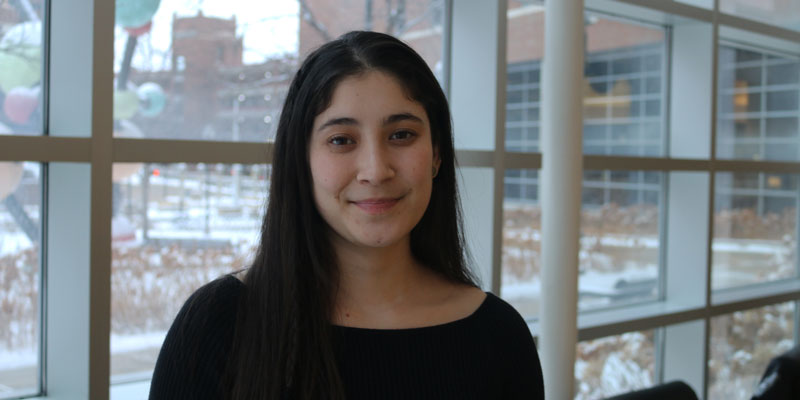A rising fourth year PhD student in the BMBB program, Maria Ramirez juggles a busy research schedule and finds time to serve as a member of the Boreas Leadership Team.

Lab: James Ervasti and Wendy Gordon Labs
Program: BMBB
Entered Program: 2017
Hometown: Santiago, Chile
Describe the focus of your PhD work.
I work to better understand Duchenne muscular dystrophy, a lethal muscle wasting disease that affects one in 4,000 boys born in the US. Children with Duchenne are wheelchair bound by age twelve and die in their twenties and early thirties. The disease is caused by the loss of a protein — known as dystrophin — in muscle cells. Dystrophin is believed to act as a shock absorber to protect the membrane of our muscle cells — akin to shop absorbers in cars that protect it from bumps in the road. When dystrophin is absent, the muscles become fragile and damaged. I’m working to better understand how dystrophin protects our muscles, with an eye to designing more effective therapies to help patients cope with the disease.
What drew you to this system?
I am interested in how forces affect and shape life. Cells sense their physical surroundings — including force. Muscle cells are constantly under the influence of forces, but also help generate them. Since muscular dystrophy affects muscle cells, understanding how forces are at play is critical to understand the disease. Now as a biochemist who specializes in protein structure/function, I am fascinated with the interplay between forces and biochemical interactions. Also, I personally experienced a disease that left me for years with muscular weakness, therefore working on a muscle related disease that aligned my personal scientific interests was one of the reasons I was drawn to the research I do today in the Gordon and the Ervasti Lab.
Outside of courses and research, what else keeps you busy on campus?
I am part of the Boreas Leadership Team. The Boreas Leadership Program is a multifaceted program that searches to empower students and professionals into turning their careers into what they want it to be, and to become agents of change in our community and society. The purpose of the Leadership Team is to generate community, by organizing events surrounding topics we believe interest our community. Examples of events we have organized in the past are toxic power dynamics within academia and Science, spirituality and our identities. The beauty of these events is that we approach them quite differently to what you would expect, we want movement and true connection between people, after all, our goal is to foster community.
What did you do at Woods Hole last summer?
I attended the physical biology of the cell course at the Marine Biological Institute. It was an intensive three week course where we used math and physics to construct models in biology. I am interested in protein and the effect of forces on them and on our cells, so I was able to model this and learn how to approach a problem in a more mathematical driven way.
How did your experience at Woods Hole impact your development as a scientist?
I am now more comfortable with the use of math and physics in my own research, and am more confident in including it in my science even if I am not an expert. It has also impacted the way I design my experiments as well. I try first to think about the theory of the physical phenomenon and then come up with a way to test it in the lab. The highlight of this course was about how I view and experience science in my day to day life, and realizing how much I enjoy it, and that the journey to get results is more important than the results themselves.
What has surprised you most during your studies?
How I can do things that I thought I could never achieve, mainly thanks to the help and support of others. The collaborative environment within our program and beyond has been unexpected and incredible, this includes students, postdocs and principal investigators.
What’s your favorite place to work on campus?
My lab, surrounded by my lab mates.